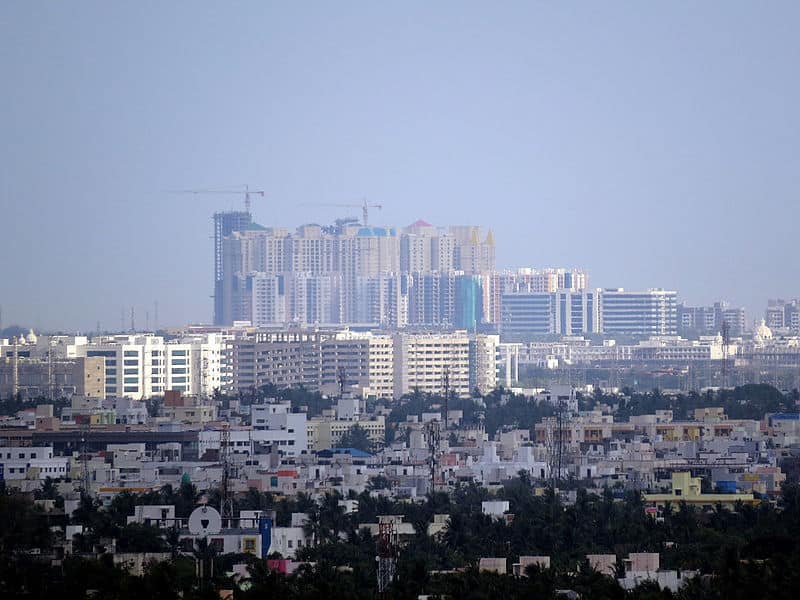As part of its mission towards a cleaner and greener Chennai, the newly elected administration has announced its plan to revive the Singara Chennai project of the late nineties. The plan is supported by a budget of Rs 500 crores, out of which the Corporation has been allocated Rs 300 crores and Metro Water, Rs 200 crores.
In an official quote to the Times of India, the goals of the campaign have been described thus:
“The funds will predominantly be used for beautifying Chennai under heads that include solid waste management, artwork, culture, improving greenery, setting up new infrastructure such as streetlights, improving water bodies and air quality of the city. The corporation has been encouraging private institutions to take up beautification of city walls with murals and paintings. The civic body has been reviewing this work every two weeks while working on the upkeep and illumination of heritage buildings and spaces. The space under flyovers will soon be attractive hangouts and new allocations will add pace to the projects.”
Clearly, Singara Chennai 2.0 is nothing if not ambitious as is evident by its sweeping scope. It has been largely welcomed by people and experts alike, with many residents’ associations reportedly sending in their suggestions as well.

Singara Chennai efforts of the past
At this juncture, it is worth examining the city’s past initiatives in a critical vein. After all, quite a few of the projects announced under Singara Chennai 2.0 are not new – in the case of solid waste management, for instance, we have failed to enforce segregation at source in most households despite decent efforts to create awareness and educate. Or take the issue of public toilets. It is estimated that the city currently has around 832 public toilets, out of which only 289 are in good condition – the rest have fallen into disrepair.
Read more: New plans for Singara Chennai raise hope among citizens
Singara Chennai 2.0 aims to refurbish existing toilets and build new ones. A good plan, no doubt. However, the past clearly shows us that success lies in the upkeep and maintenance of these properties, not just their development. Like public toilets, most items on Singara Chennai 2.0’s checklist cannot be one-time projects. They need consistent effort to have a positive impact on the city’s standard of living in the long run.
Social justice focus a must
The second point, one that we trust the new administration will keep in sight, is that of social justice. Beautification is a good thing to aim for, but it cannot be so at the expense of livelihoods. Project Blue, a project that will come under the aegis of Singara Chennai 2.0, is a good example. It seeks to beautify the beaches and improve tourism. However, if such a plan does not take the fisher folk community into account, it risks endangering their livelihoods.
Given the stakes, it can be argued that our beaches don’t really need fancy embellishments like water sports facilities as much as proper public toilets and efficient waste collection services – our coastline is beautiful if only we can take care of it as it is. If Singara Chennai 2.0 is to be a true success, it must involve the public and stakeholders in its plans so that it focusses on the city’s needs instead of decorative initiatives that give back little to the people.
Read more: What do the people of Chennai want from the new government?
Coordination paramount to achieve Singara Chennai
Singara Chennai 2.0 would also benefit greatly from an inter-departmental approach. Take the plans to improve spaces under flyovers, for instance. It is heartening that the administration is making efforts to build more public spaces for the people to enjoy. But, surely, our city has bigger issues to address first? We hardly have footpaths, for example, and what little strip of path there is, is usually taken over by hawkers and vehicles.
To its credit, the administration has committed itself to making the city’s streets more pedestrian-friendly and disabled-friendly as well. One can only hope that initiatives such as flyover hangout spaces will take the larger picture into account. The serious problems that 2.0 seeks to address, such as lake rejuvenation, solid waste management and pollution amelioration, are not ones that isolate themselves neatly into a specific department. It requires coordination and planning across the various arms of the civic body in order to devise an efficient solution that delivers.
We must redefine what beauty means for our city. A truly beautiful Chennai is a cleaner, greener city, one that has evolved to offer a better standard of living to all its people and is more resilient in the face of disasters. Such beauty and strength demand consistent effort towards form, functionality and maintenance. If Singara Chennai 2.0 can pull off such a vision, its achievements will be enjoyed by the city’s future generations, not just the current one.
[This story was first published on Madras Musings. It has been republished with permission. The original article can be found here.]